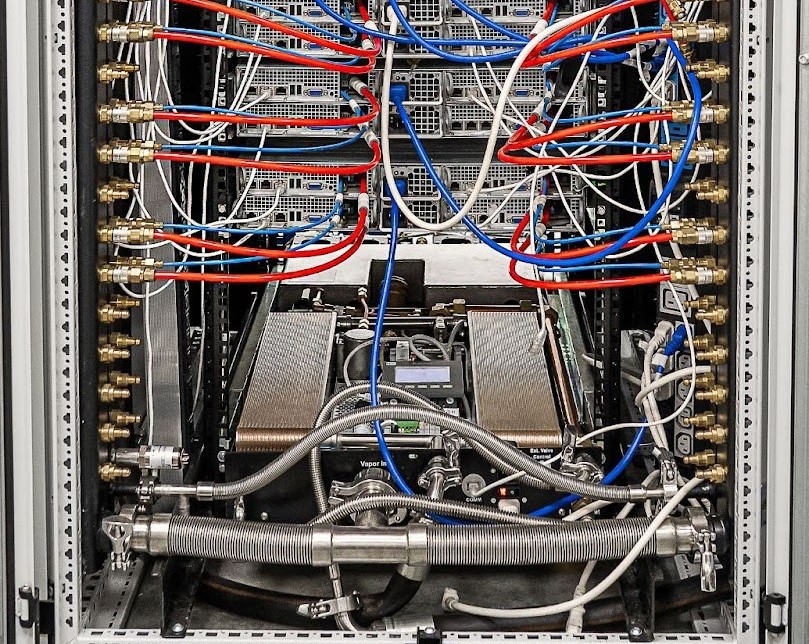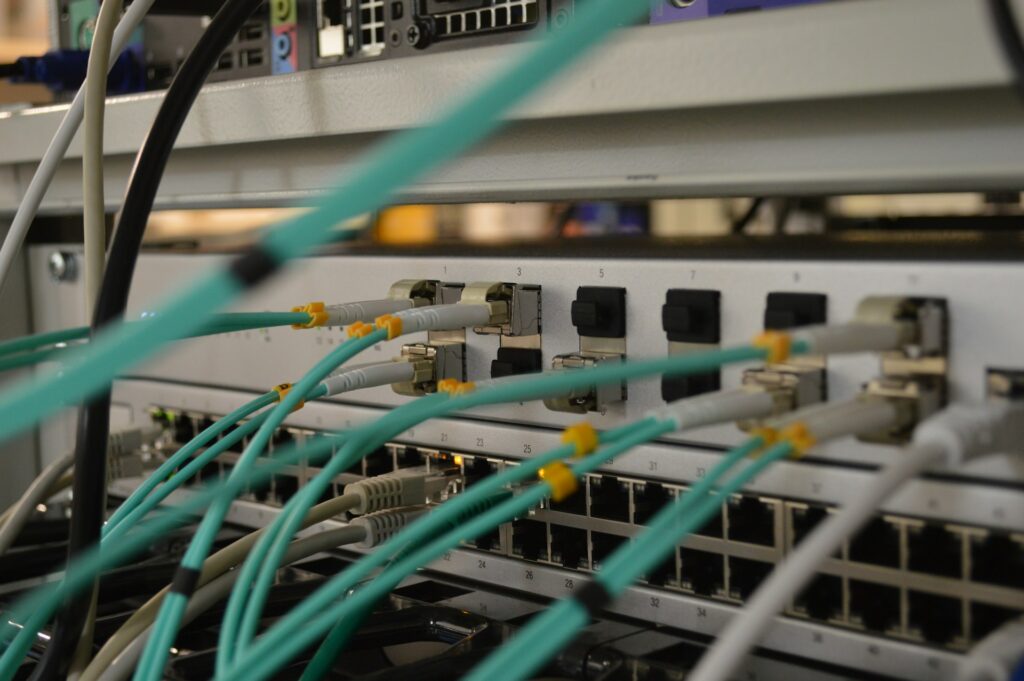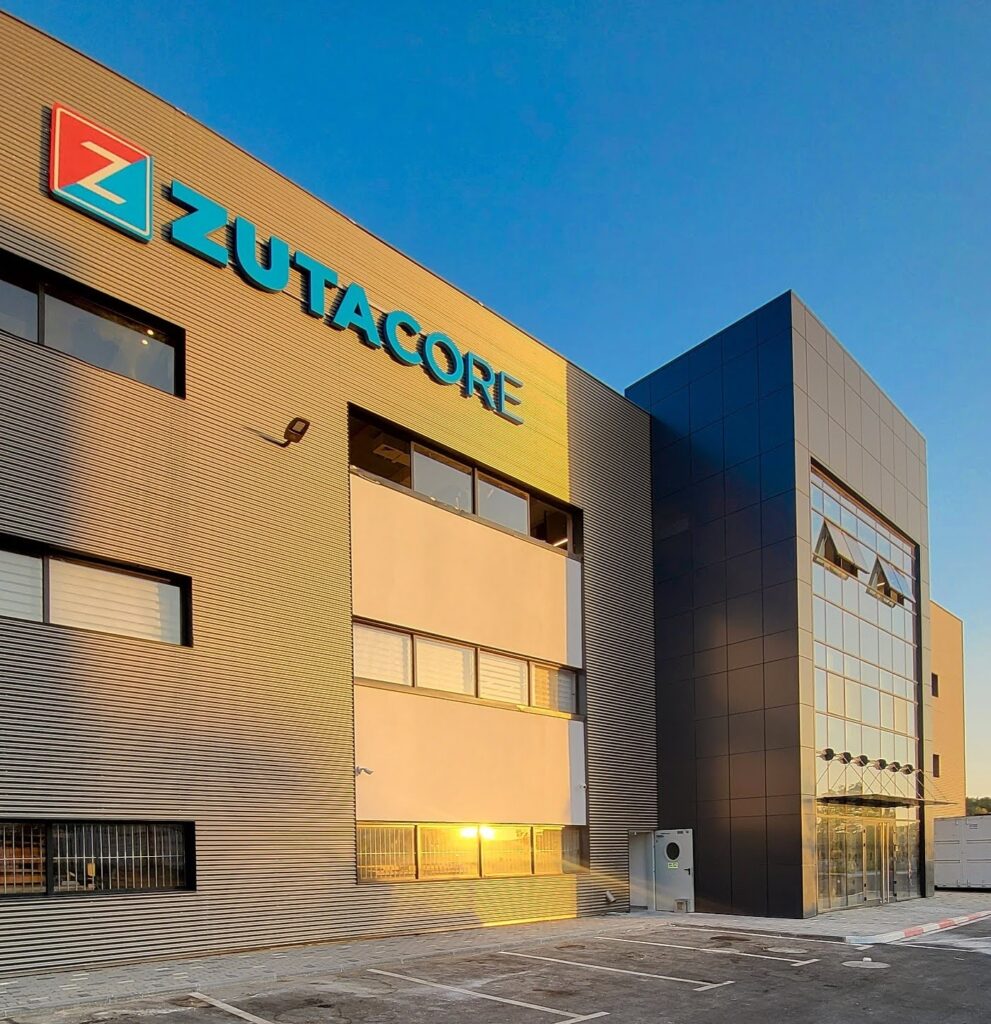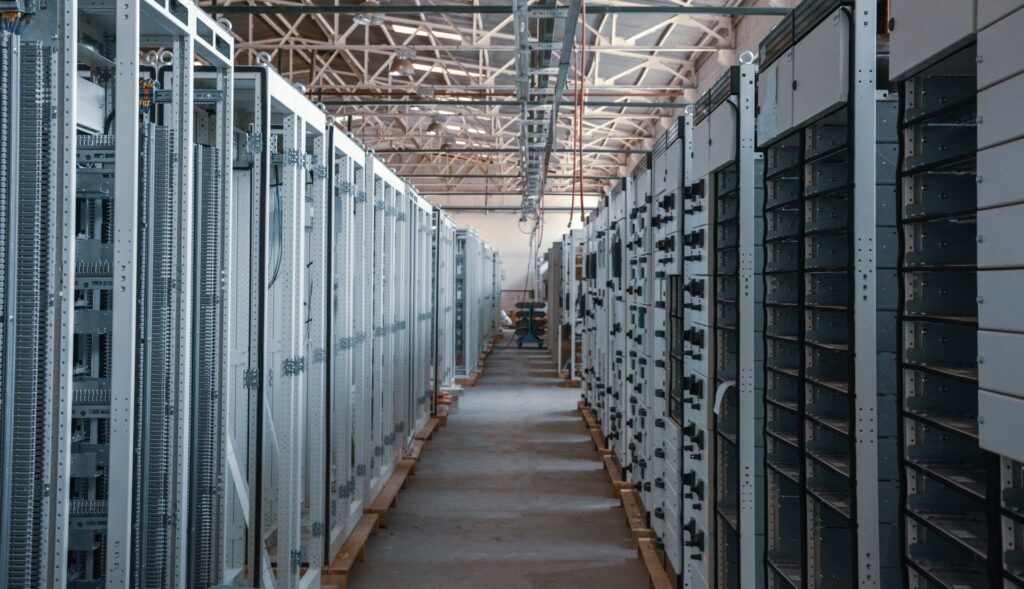Every tech company in the world uses servers containing silicon chips to store vital data and carry out other crucial functions that keep websites, e-commerce and social media alive.
Overheating is a familiar problem to many people who own a computer, and it is even more prevalent and far more consequential in the data centers that hold these sensitive servers, which we rely on for every aspect of our modern, interconnected world.
And Sderot-based startup Zutacore has come up with a cost-effective, sustainable way to ensure that the servers do not overheat and fall or are damaged by traditional water-based solutions to this problem.
Inside a data center, computer systems are organized using racks resembling large shelves holding many powerful servers. They are connected with cables so that they can share information and work together efficiently.
But the servers overheat when they experience a phenomenon called heat flux – when the chips cannot get rid of heat as quickly as they create it. This is a long-standing issue in computers, and as they get bigger and more powerful, the ability to cool them becomes more challenging.
Zutacore has developed a method of removing the heat from the computer processors with a unique two-phase cooling system.
The technology comes as a box-shaped device attached directly to the cold plate of each individual server. The cold plate is a standard feature for processors consisting of a metal sheet placed on servers to help regulate their temperature using water, similar to a car radiator.
But unlike these traditional cooling solutions that are reliant on water, Zutacore’s HyperCool system uses a dielectric liquid that does not conduct electricity, making it safe to use directly on electronic components.
Emanating from the HyperCool box are two pipes – one blue and one red – that are attached to each individual server.

The dielectric liquid enters from a storage unit on the side of the box through the blue pipe, where it absorbs the heat from the server to which it is connected.
The liquid boils and turns into vapor, which draws the heat out from the processor. This vapor is taken through the red pipe out of the data center via an external port, just as an air conditioning unit removes excess water to the outside.
“You have a layer of liquid that when heat comes up from the chip, boils that liquid. Vapor comes out with the heat, and more liquid comes in as the vapor leaves,” Zutacore Executive VP Product and Innovation Shahar Belkin tells NoCamels.
He explains that this cools the chip by evenly and consistently removing heat through the boiling process.
“If you don’t have the liquid, the system will burn right through the metal,” he says.
As long as the liquid is boiling and leaving as vapor, it doesn’t matter how large the server is, Belkin explains. It will always do the same thing – turn that liquid into vapor and take the heat away.
The change from liquid to vapor is known as phase-change cooling, and is significantly more effective than single-phase liquid cooling systems that rely on water. This allows for more processors to be stored in closer proximity without any risk of leaks damaging the electronics.
“Water and electronics don’t mix well together,” Belkin explains. “One drop, one mistake by one employee, or one small scratch in a tube will create a leak that will kill a server.”
He says that just one rack in a data center can have up to $3 million worth of computer equipment, with a traditional water-based cold plate, one minor leak can destroy an entire rack.
But with the non-conductive fluid used by HyperCool, he says, “you can take a bucket of this liquid and pour it on the surface [of the server] and nothing would happen.”
The Zutacore solution also allows data centers to fill racks that are currently only at 25 percent capacity due to the need for extra space for cooling. Placing servers closer together increases data transfer speed and saves a considerable amount of money.
“The big saving is on the network between the servers,” Belkin explains. “If you have for example 100 servers but they are distributed in 50 racks because you don’t have enough cooling, there’s a lot of networking to be done between [them], which is very expensive.”
It also affects the speed of the cluster of servers because the information moves between them and using long cables or fiber optics means a reduction in speed of operations by 20 or even 30 percent.
Sign up for our free weekly newsletter
Subscribe
Furthermore, a more efficient cooling system means less energy consumption. The US Department of Energy says data centers can reduce this energy consumption by 20 to 40 percent, simply by implementing energy-efficient cooling strategies.
Co-founded in 2016 by CTO Nahshon Eadelson and CEO Erez Freibach, Zutacore is now supplying its cooling solution to leading data centers across the world including those of industry giants such as Dell, Equinix and Intel.
Belkin praises Eadelson, who developed the technology based on hands-on experience and personal vision rather than any formal education.
“Nahshon Eadelson created the idea of Zutacore,” Belkin says. “He didn’t even finish high school and today he is sitting down with thermodynamics professors – and he can teach them. His ability to see the physics in his brain [means] he actually solved a problem where people before him did not succeed.”
The processors using HyperCool have been retrofitted, a process that Zutacore says causes no delay in their functioning or threat to the internal operations of the chips.
The companies carried out extremely lengthy and rigorous testing processes to ensure that the solution was safe for the chips and cooled to the levels that Zutacore claims.
“Equinix is the largest data center provider in the world,” Belkin says.
“They have more than 200 data centers around the world. They installed our first systems in 2019 and since then, they’ve been testing them. Only last year, they gave us a green light to start implementing in 100 of their data centers.”
With this global expansion, Zutacore now globally has offices in California, Taiwan, India, the Netherlands and South Korea.
And the company is now expanding its scope with a partnership with one of the world’s major manufacturers of servers, the Taiwan-based Wiwynn Company.
The strategic partnership means that Wiwynn both invested in Zutacore and integrated the HyperCool technology into the production of its servers, so that they come with the solution already installed.
“The servers will come out of the factory with Zutacore inside, so the data centers only have to connect it to a rack or a system, and [it] will be up and running, Belkin says.
Leading industrial firm Mitsubishi Heavy Industry also invested in Zutacore in September of last year, planning a partnership that will turn the heat removed by HyperCool into a source of renewable energy, further reducing the ecoystem’s environmental impact.

Zutacore has a strong presence in southern Israel, and its technology lab is based in Sderot, in the area close to the Gaza border that was targeted in the mass Hamas terror attack on October 7 that killed 1,200 people and saw more than 240 dragged into Gaza as hostages.
But the company plans to keep expanding, aiming by the end of the year to have tripled the number of staff since the start of the war, while still keeping its base in the south.
The majority of Zutacore’s personnel are from the Western Negev and Gaza border area. Some had to be evacuated from their homes at the beginning of the war.
The building housing the lab was also hit by an RPG fired by a Hamas terrorist during the attack, but fortunately the entire Zutacore team is safe and the lab was undamaged.
But Belkin says the war has not slowed the company’s momentum or its ability to supply HyperCool to all of its customers without delay.
“Worldwide, nobody felt there was no shortage of Zutacore supply,” he says.
“We continued working like nothing had happened. From our point of view, the company showed it can survive and its resilience.”
Related posts

Editors’ & Readers’ Choice: 10 Favorite NoCamels Articles

Forward Facing: What Does The Future Hold For Israeli High-Tech?

Impact Innovation: Israeli Startups That Could Shape Our Future




Facebook comments